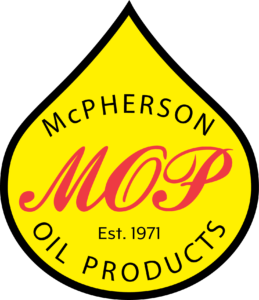Hydraulic System Maintenance
11 Jun 2019, Posted by in General
Hydraulic systems power the moving parts of many kinds of industrial equipment. The lifeblood of your hydraulic system – the hydraulic fluid – requires four key areas of care to gain optimum service life. Also, to ensure proper function, periodic maintenance is important – and can add up to maximized uptime and reduced repair costs.
Hydraulic System Care
Hydraulic system maintenance is just as important, and directly related to, hydraulic oil maintenance. All the filtering and analysis done on a hydraulic oil would be meaningless and futile if the system itself is in shambles.
A 10 Point Check — A lubrication technician or operator responsible for hydraulic system maintenance should, at minimum, perform the following 10 point checklist as part of a routine weekly “quick scan” of a hydraulic system:
1. Check fluid levels. Add oil (if needed) via portable filtration (if available). DO NOT MIX OILS! Use the same oil brand and viscosity grade that is being used in the system.
2. Inspect breather caps, breather filters, and fill screens — DO NOT punch holes in screens in order to expedite adding oil.
3. Check filter indicators and/or pressure differential gages.
4. Visually inspect all system hoses, pipes, pipe connections for leaks, and frays. Hydraulic fluid leakage is a common problem for industrial systems. Excessive leakage is an environmental and safety hazard, increases waste streams and oil consumption, and, if ignored, can reduce the system capacity enough to overheat the system.
5. Check system temperature via built-in thermometers or hand-held infrared detectors. The normal temperature range for most systems is 110-140ºF. If temperatures are high, check cooler operation and
relief valve settings.
6. Visually inspect the inside of the reservoir for signs of aeration (via the fill hole using a flashlight). Aeration is a condition in which discrete bubbles of air are carried along in the stream of oil as it enters the pump. Visual signs of aeration in the reservoir are generally foaming and/or little whirlpools taking small gulps of air into the suction strainer. Causes of aeration include low fluid levels; air leaks in the suction line; low fluid temperature; fluid is too viscous to release air or maintain suction at the pump; or faulty shaft seals. When air leaks are suspected on the suction line, smothering these points with oil will usually pinpoint the leaks by creating a marked change in pump noise. A pump ingesting air sounds as if it were gargling marbles.
7. Listen to the pump for the signs of cavitation. Cavitation is slightly more complicated than aeration but bears some similarities. Cavitation occurs when air is released from the hydraulic oil during momentary depressurization at the pump suction and then imploded onto metal surfaces upon discharge. These implosions are extremely destructive to pump surfaces. A cavitating pump will emit a high-pitched whine or scream. Causes of cavitation are the same as those of aeration with the exception of suction side air leaks. How do you discern aeration from cavitation? One way is to install a vacuum gage on the suction side and make sure the pressure is equal to or greater than that prescribed by the pump manufacturer. Foaming in the reservoir is usually the telltale sign of aeration.
8. Inspect a small sample of fluid for color, signs of contamination, and odor. Keep in mind that visual inspection is limited in that it will only detect signs of excess contamination.
9. Scan electrically controlled servo valves with an infrared thermometer. High valve and solenoid temperatures (over 150ºF) usually indicate the valve is sticking.
10. Scan the electric drive motor for housing hot spots and rotor bearing temperatures using an infrared thermometer.
Making this a routine practice is key to keeping your system working efficiently.
McPherson Oil wants to be more than a supplier. Our Industrial Services professionals believe in a partnership approach to improving the operation of your facility. We offer several services and can tailor a maintenance/repair program to fit your facilities’ needs.
McPherson Oil is an Authorized Distributor of ExxonMobil products in the Southeast including Alabama, Georgia, Greater Chattanooga Area, Florida Panhandle, Mississippi Gulf Coast, Greater New Orleans Ares, and Arkansas.
*Source: ExxonMobil – “Technical Topic: Hydraulic System Care and Maintenance“
